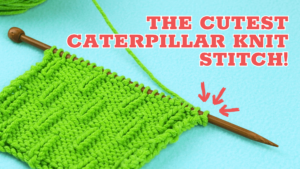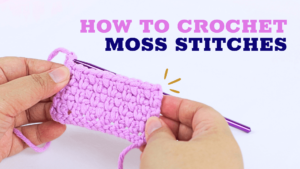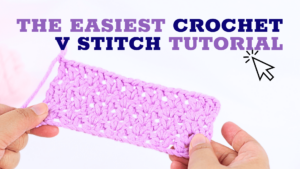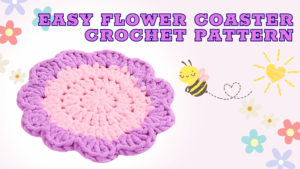Knitting Needles for Beginners: Choosing Straight, DPN, and Interchangeable Knitting Needles!
Let's learn all about knitting needles!
Let's learn all about knitting needles!
Welcome to the world of knitting! As you dive into this craft, you’ll quickly learn that your choice of needles can make all the difference in your knitting experience.
In this beginner’s guide, we’ll explore the basic differences between knitting needle types and materials! Whether you’re wondering about the pros and cons of straight versus circular needles or simply want to understand what size needles to use for your project, this guide has got you covered!
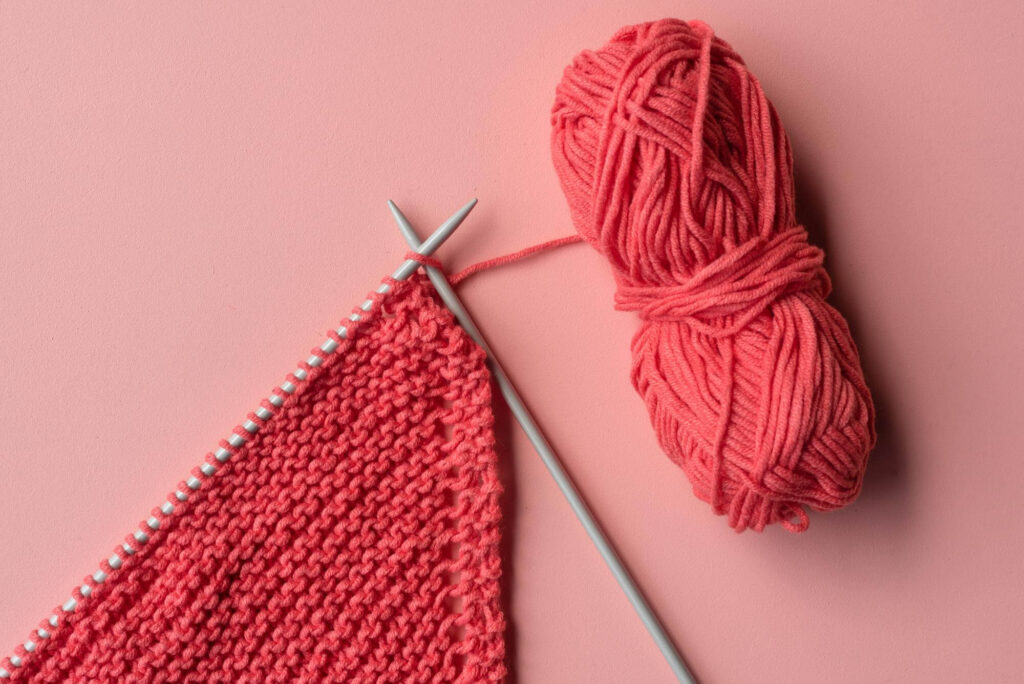
Learning the different names of knitting needles and their uses can help improve your knitting experience. Each type of needle is made to assist a knitter in completing a specific project with minimal difficulty.
If you’re ready to widen your knowledge of the world of knitting, keep scrolling!

Don’t you just hate when yarn slips off your knitting needles?
Introducing BeKnitting’s Set of 9 Straight Bamboo Knitting Needles! Sleek, sturdy, and slip-proof, these needles will give you the smoothest knitting experience ever.
Find them on Amazon!
Because knitting needles come in so many shapes, sizes, and materials it’s easy for new knitters to feel a little bit lost when it comes to choosing the perfect pair for each project. To help, we’ve come up with a beginner-friendly guide for knitting needles!
Check out this awesome list of the types of needles you’ll encounter on your knitting journey!
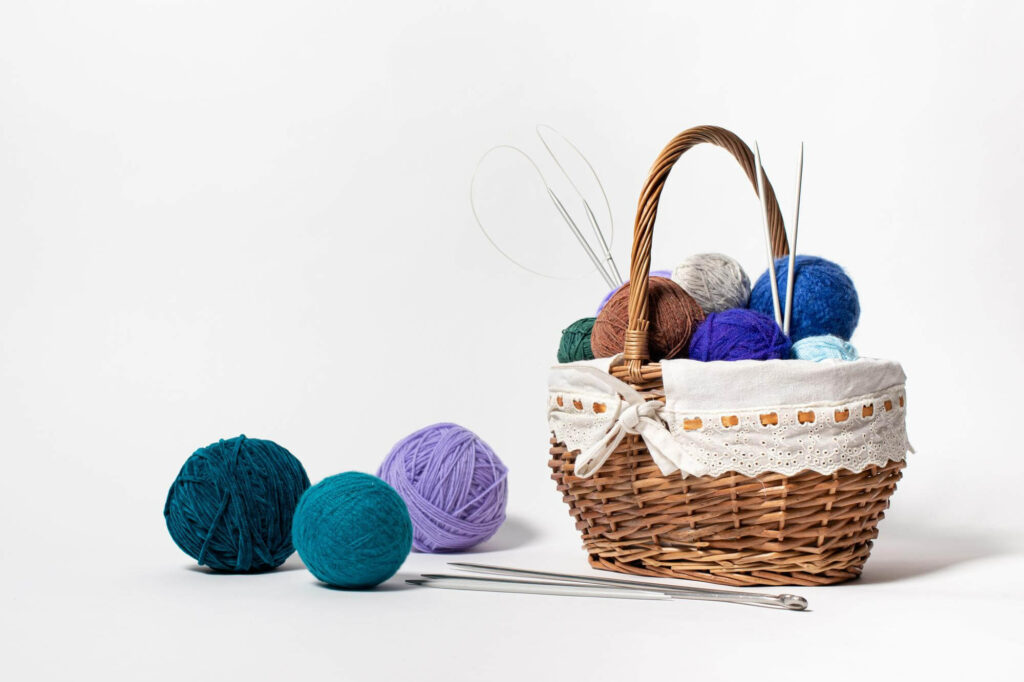
When you think of ‘knitting needles’, your first thought is probably a pair of straight needles! They’re iconic and the most traditional knitting needle style. Straight needles come in pairs and each needle has a pointed tip with a stopper at the back.
These needles are designed for projects knit flat, back and forth, in rows. You can get straight needles in a bunch of different lengths too! When choosing a pair of needles make sure to get a set that’s slightly longer than your project. Having more stitches than the needles can hold makes it pretty likely that you’ll drop stitches and no one likes that!
What about knitting afghans on straight knitting needles?
Big projects on straight needles can be hard! Having that many stitches on the needles makes it more likely you’ll drop a few as you go and it also puts a lot of strain on your wrists and hands. Instead of sticking with straight knitting needles we recommend switching to circular knitting needles instead!

Straight Knitting Needle Pros:
Straight Knitting Needle Cons:
DPN or Double Pointed knitting needles can be used to make projects that are worked in a round, small, require a lot of flexibility — or a combination of all three!
These usually come in sets of four to six and have a point at each end of the needle. These needles are typically 3- 8 inches long to fit different diameter proejcts.
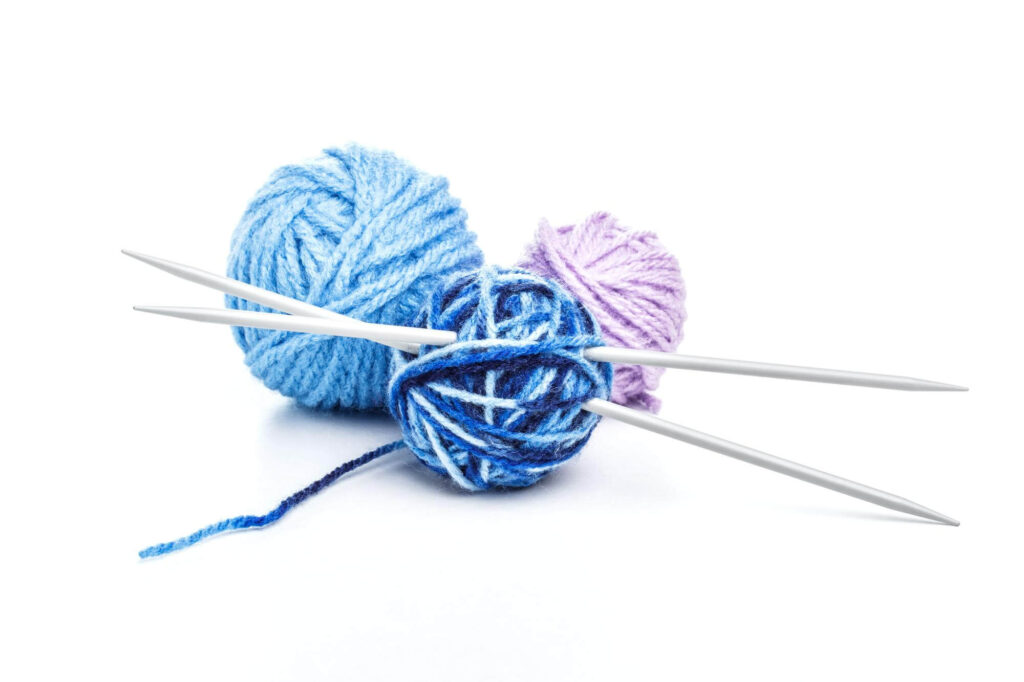
Pros:
Cons:
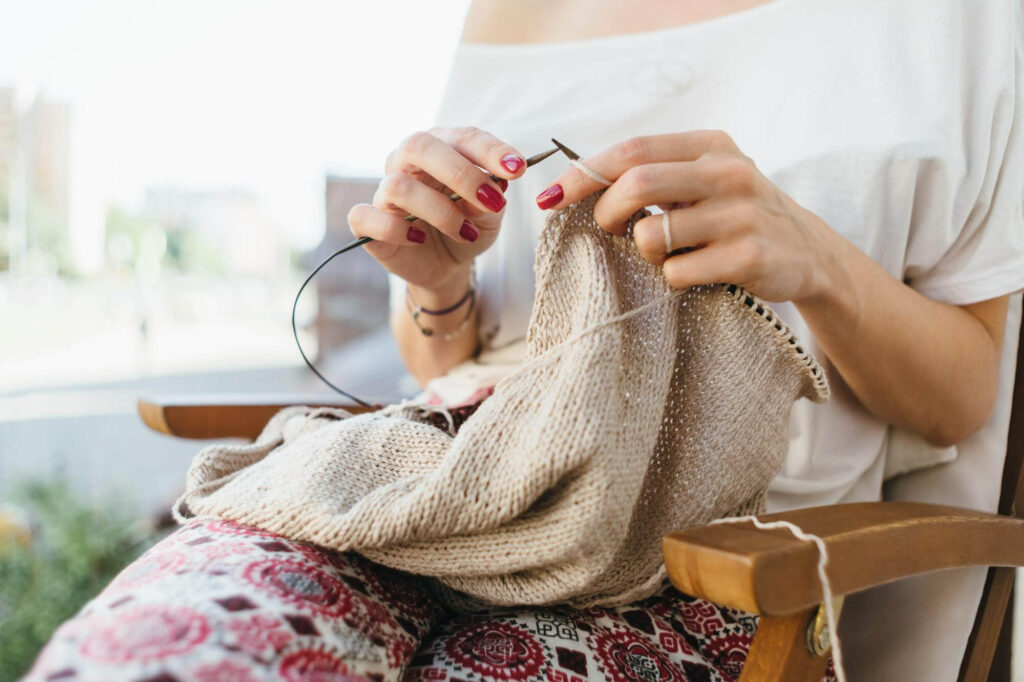
If you’re taking on a large knitting project, then a pair of circular knitting needles is what you need. These are needles connected by a tube or cord in the middle.
Much like the needles in this article, circular needles come in different lengths, thicknesses, and made with a variety of materials. There are two types: Fixed circular knitting needles and Interchangeable circular knitting needles. Let’s talk about them:
Interchangeable Knitting Needles
Interchangeable knitting needles are the Swiss Army knife of knitting! They offer versatility and convenience in one compact set. Interchangeable knitting needles come in sets of multiple needle tips that can be screwed onto different lengths of cables, allowing you to customize the needle size and cable length for each project.
With interchangeable needles, you’ll have the freedom to experiment with different needle sizes and cable lengths, all while enjoying a seamless knitting experience.
Pros:
Cons:
Fixed Circular Knitting Needles
Just like the interchangeable knitting needles, fixed circular knitting needles have a cord connecting two knitting needles in the middle! However, the needles are fixed to the cable which means you can’t mix-and-match tips and cables to change sizes or lengths. This variation of circular needles is also perfect for larger projects and projects knitted in a round.
Pros:
Cons:
Naturally, the material used to create the knitting needle itself can also have an effect on your knitting experience. So let’s talk about them!

Wooden knitting needles are beloved by knitters for their warmth, smoothness, and natural feel. Crafted from various types of wood such as bamboo, birch, or maple, these needles offer a gentle grip that’s easy on the hands, making them perfect for extended knitting sessions. Their slightly grippy surface helps prevent stitches from slipping off, making them particularly suitable for beginners or those working with slippery yarns. Plus, the natural properties of wood can help regulate temperature, keeping your hands comfortable while you knit.
Pros:
Cons:
There are two common types of wooden needles: Bamboo and Laminate.
Bamboo knitting needles are common and very popular among knitters of all skill levels. They are known to be strong, sturdy, and quite affordable! Laminated wood knitting needles are sturdier and smoother than bamboo needles.
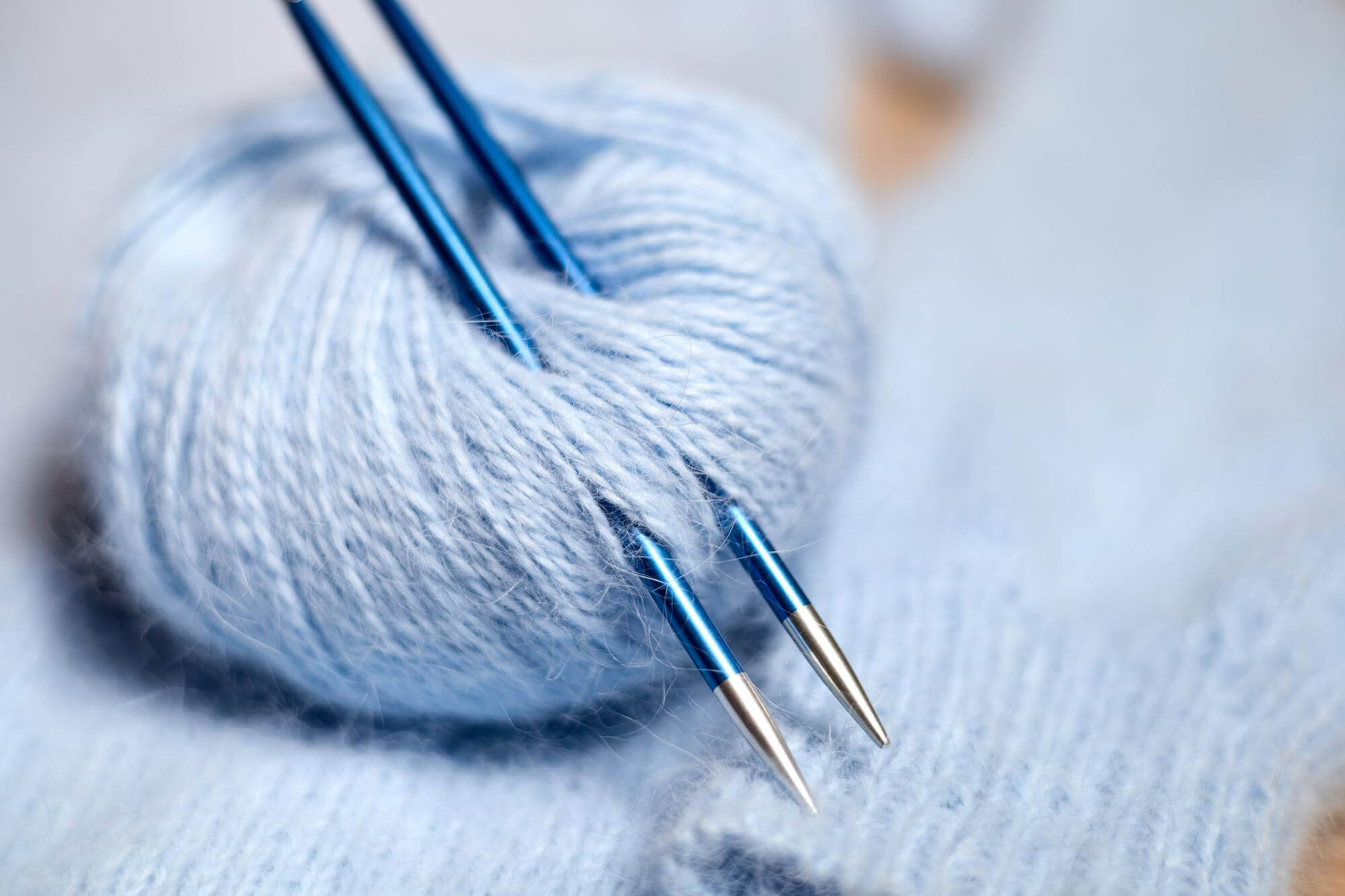
Metal needles are perfect for knitters who want a smoother knitting experience. Metal knitting needles are often made out of aluminum, carbon, or nickel and are a lot more durable than their wooden and plastic counterparts. It’s also much easier to make very sharp, fine points in metal which makes metal needles great for complicated stitches like knitted nupps and or cables.
While these do last long, the smoothness of metal can make it challenging for new knitters as loops can very easily slip off! The slick surface is also a great choice for yarns that are “sticky” and need extra help sliding off the needles.
Pros:
Cons:
Aluminum knitting needles are solid but lightweight and are some of the most commonly used needles by knitters of all skill levels. They offer a smooth knitting experience, minimal snags, and satisfying ASMR clicking sounds!
Steel knitting needles offer the same gliding knitting experience as aluminum needles, steel needles are fantastic for knitters struggling with creating even stitches. It’s anti-snag quality makes it perfect for intricate patterns!
Carbon fiber knitting needles Are super lightweight, slick, and easy to use. They’re a great choice for knitters with arthritic hands and other hand-related conditions!
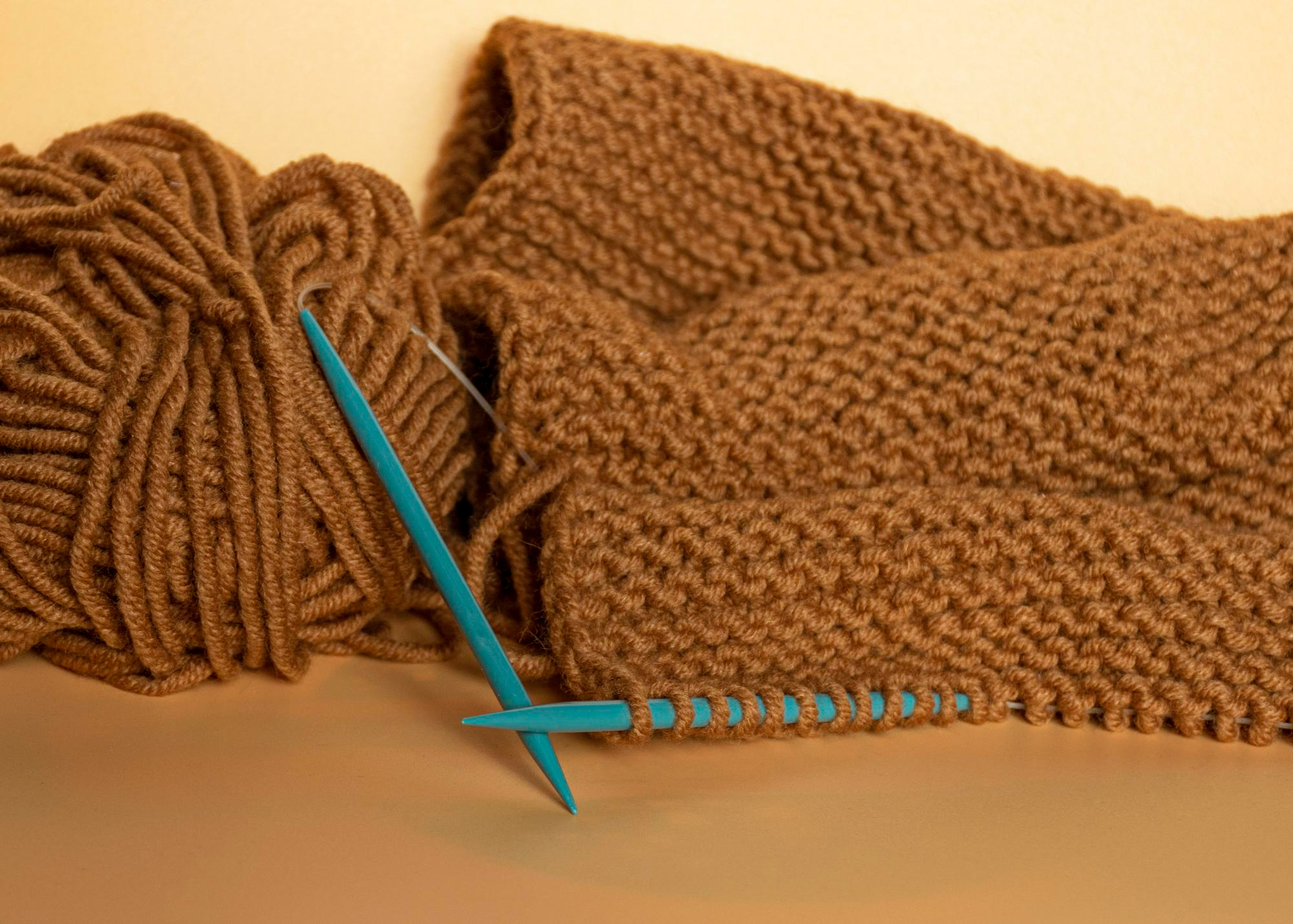
Smooth but not too slippery, acrylic/plastic needles are also a good starting point for beginner knitters. These types of needles are very easy to find, affordable, and available in various knitting needle sizes. They also come in a wide variety of colors, designs, and styles — some can even be customized to your preferences! Cool, right?
Pros:
Cons:
So, how do you store your knitting needles? Are there specific storing conditions that need to be met?
Well, it’s actually much easier than you think. Heck, you might even have a few household items available to you right this moment! Check out these handy storage ideas:
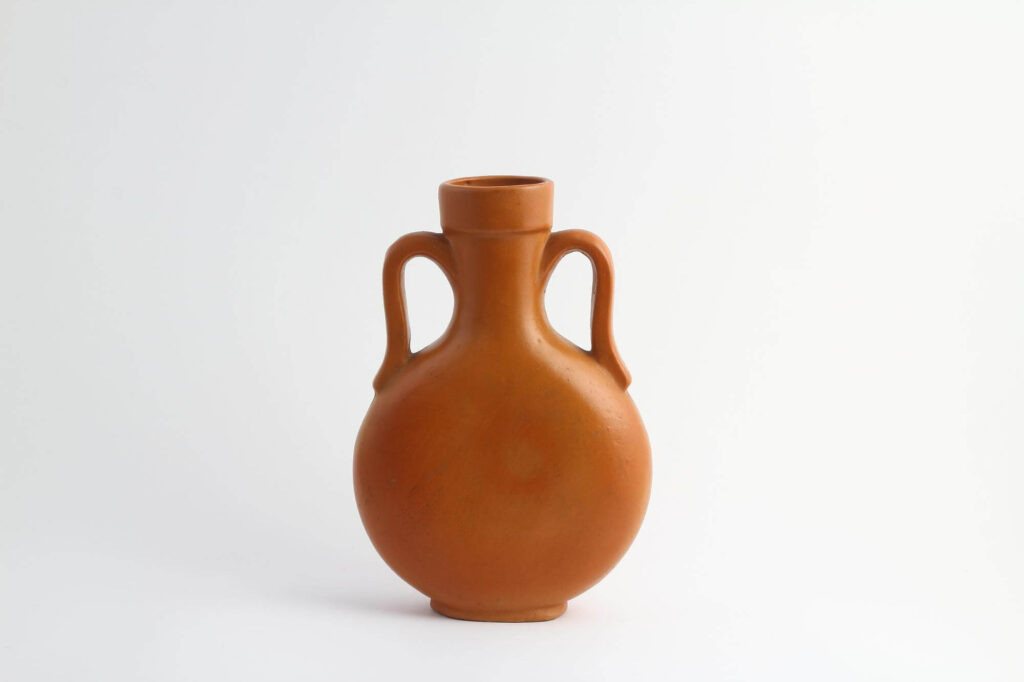
Starting out with our favorite storage go-to’s; mugs, jars, and pretty vases! Basically anything tubular can be the perfect place to store needles and other knitting materials.
This is a good way to keep frequently-used materials within arm’s reach!
Zippered binders are another awesome way to keep needles. This is an especially nifty way of storing needles of the same gauge, material, and type.
Zippered binders are amazing in keeping all your needles in one place. If you run out of sleeves, all you have to do is buy a couple of refills and you’ll be all set!
Of course, let’s not forget about the classic needle organizers. These containers are specifically made to store knitting needles and other materials that you may need.
I also love taking these while I’m out and about as they prevent my needles from poking holes through my bag!
Clear storage containers is perfect for knitters who have accumulated enough knitting needles and materials that it’s starting to become a problem (i.e. like me).
You can stack these on top of each other without worrying about accidentally deforming or ruining any of your hoar- I mean, collection…
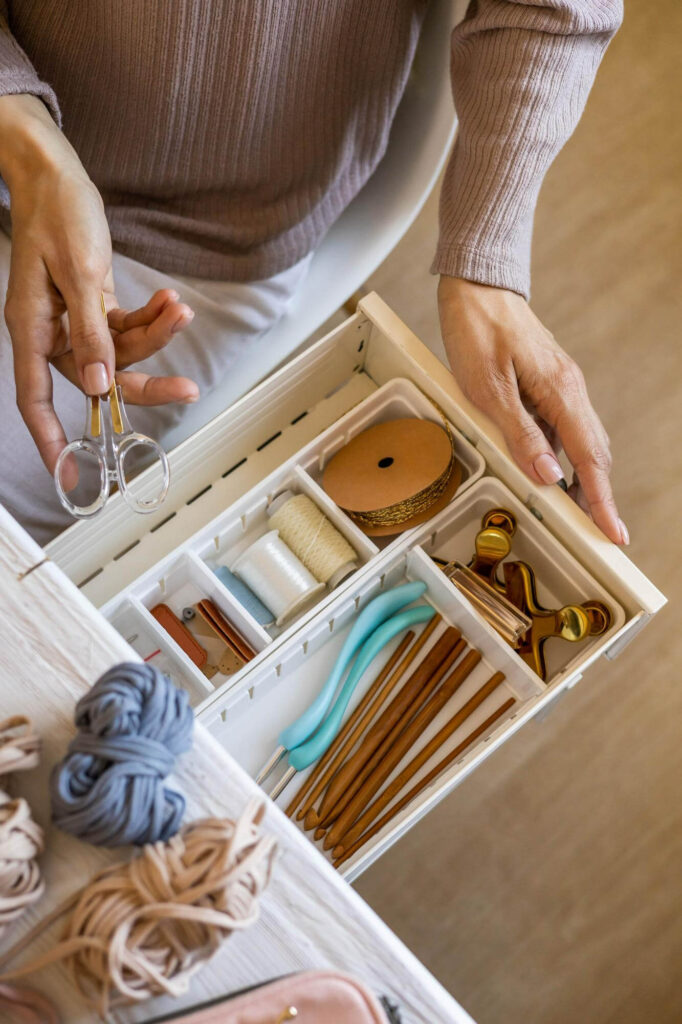
If you’re a hardcore knitter or hobby collector, then you might want to start organizing your materials in dedicated drawers.
I also have a full-sized cabinet filled with only yarns, needles, and crochet hooks. Yes, it works really well. No, it’s not enough!
There’s no need to stress out about finding the perfect pair of knitting needles. The truth is that there is no such thing as the perfect pair!
It’s very likely that you will have your favorites over time. Don’t be afraid to explore each category. I’ve been knitting for half a decade now, but I still cycle through different needles too.
So if your first pair didn’t work out well for you, it’s fine! Just pick out another one. You can always donate unwanted needles to charity or even find someone willing to trade needles with you.
Find more beginner knitter tips and tricks here:
Looking for FREE patterns?
Knit for those in need!
